

The Karnak Temple Complex, commonly known as Karnak comprises a vast mix of decayed temples, chapels, pylons, and other buildings near Luxor, in Egypt. Construction at the complex began during the reign of Senusret I in the Middle Kingdom and continued into the Ptolemaic period, although most of the extant buildings date from the New Kingdom. The area around Karnak was the ancient Egyptian Ipet-isut ("The Most Selected of Places") and the main place of worship of the eighteenth dynasty Theban Triad with the god Amun as its head. It is part of the monumental city of Thebes. The Karnak complex gives its name to the nearby, and partly surrounded, modern village of El-Karnak, 2.5 kilometres (1.6 miles) north of Luxor. The history of the Karnak complex is largely the history of Thebes and its changing role in the culture. Read more

Leslie, Hassan, Irene and I drove to the Karnak Temple. The driver of the van waited for us in the parking area just outside this massive complex, in a parking lot filled with other tour buses bringing visitors from Europe, Japan, and the US.
There were many people there that day. The weather was cool so I wore several layers of clothing. There is a rest area and food concession somewhere inside where we eventually stopped for some bottled water and small snack. Again I was forced to bargain with the local store owners about the price of a disposable camera, my third one.
The Karnak Temple complex just to the north of Luxor, consists of three main temples, and several outer temples. The main complex, The Temple of Amun, and is the masterpiece of the ancient city of Thebes. It's situated in the center of the entire complex.
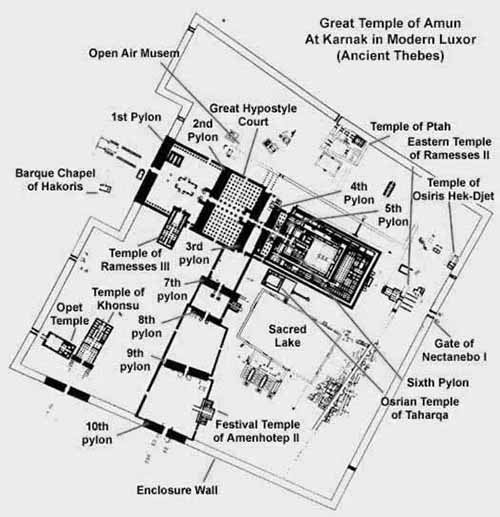
Karnak Open Air Museum is an archaeological museum in Luxor, Egypt. It is located in the northwestern corner of the Precinct of Amon-Re at the Karnak complex. The Open Air Museum contains reconstructions of structures that have been dismantled and buried or hidden inside the massive pylons in the complex. Preventive archaeological excavations before the renovation of Amenhotep II's calcite shrine were observed in this area (CFEETK), including an urban unit with mudbricks walls of Saito-Persian time. I t contains six shines. Read more
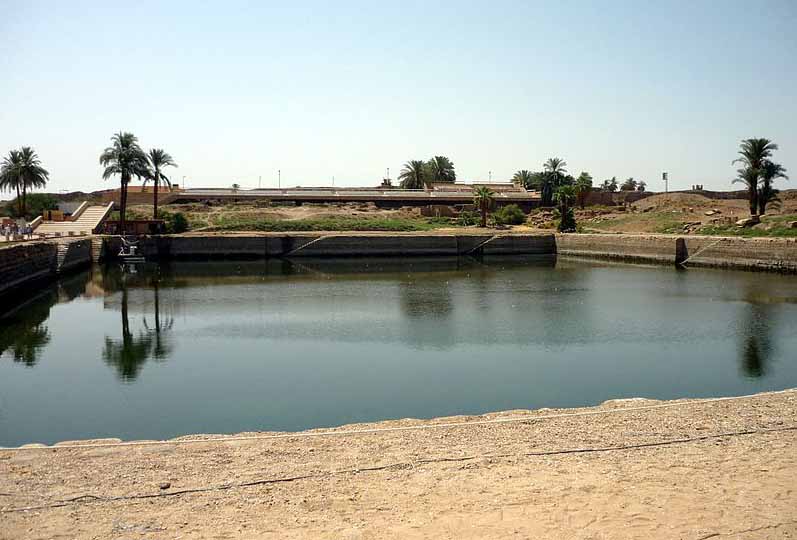
The lake is located on the south side of the Karnak Temple. It is a vast stretch of water surrounded with a magnificent view. The lake symbolizes the waters of the primordial ocean. The water of the lake comes from the Nile. At the northwest corner of the lake lies a magnificent beetle shaped scarab that watches over the lake. The scarab was placed by King Amenhotep III. It symbolizes the transforming quality of the sunlight that comes out of the darkness. The encircling walls of the lake have courses of stones that has a wavy design. That was a hieroglyphic symbol for the water flow. The lake was used by ancient Egyptian priests for purification of souls. A person may wonder where the tradition of Christian baptism inside the churches, compared to temples, came from.
The Temple of Monthu is to the north of the Temple of Amun, while the Temple of Mut is to the south.
The principal female counterpart of Amen-Ra, the king of the gods, in the New Empire was Mut, whose name means "Mother." and in all her attributes we see that see was regarded as the great "world-mother." who conceived and brought forth whatsoever exists.
The pictures of the goddess usually represent her in the form of a woman wearing on her head the united crowns of the South and of the North, and holding in her hands the papyrus scepter and the emblem of life. Elsewhere we see her in female form standing upright, with her arms, to which large wings are attached, stretched out full length at right angles to her body. She wears the united crowns, as before stated, but from each shoulder there projects the head of a vulture; one vulture wears the crown of the North, and the other two plumes, though sometimes each vulture head has upon it two plumes, which are probably those of Shu or Amen-Ra.
In other pictures the goddess has the head of a women or man, a vulture, and a lioness, and she is provided with a phallus, and a pair of wings, and the claws of a lion or lioness. In the vignette of clxivth Chapter of the Book of the Dead she is associated with the two dwarfs, each of whom has two faces, one of a hawk and one of a man, and each of whom has an arm lifted to support the symbol of the god Amsu or Min, and wears upon his head a disk and plumes. In the text which accompanies the vignette, though the three-headed goddess is distinctly called "Mut" in the Rubric, she is addressed as "Sekhet-Bast-Ra, a fact which accounts for the presence of the phallus and the male head on a women's body, and proves that Mut was believed to possess both the male and female attributes of reproduction.
Amen (Amon) and Amen-Ra, King of the Gods, and the Triad of Thebes:
Among the gods who were known to the Egyptians in very early times were Amen and his consort Ament, and their names are found in the Pyramid Texts, e.g., Unas, line 558, where they are mentioned immediately after the pair of gods Nau and Nen, and in connection with the twin Lion-gods Shu and Tefnut, who are described as the two gods who made their own bodies, and with the goddess Temt, the female counterpart of Tem.
It is evident that even in the remote period of the 5th Dynasty Amen and Ament were numbered among the primeval gods, if not as gods in chief certainly as subsidiary forms of some of them, and from the fact that they are mentioned immediately after the deities of primeval matter, Nau and Nen, who we may consider to be the equivalents of the watery abyss from which all things sprang, and immediately before Temt and Shu and Tefnut, it would seem that the writers or editors of the Pyramid Texts assigned great antiquity to their existence.
Of the attributes ascribed to Amen in the Ancient Empire nothing is known, but, if we accept the meaning "hidden" which is usually given to his name, we must conclude that he was the personification of the hidden and unknown creative power which was associated with the primeval abyss, gods in the creation of the world, and all that is in it.
The word or root amen, certainly means "what is hidden," "what is not seen," "what cannot be seen," and the like, and this fact is proved by scores of examples which may be collected from texts of all periods. In hymns to Amen we often read that he is "hidden to his children, "and "hidden to gods and men," and it has been stated that these expressions only refer to the "hiding," i.e., "setting" of the sun each evening, and that they are only to be understood in a physical sense, and to mean nothing more than the disappearance of the god Amen from the sight of men at the close of day.
Now, not only is the god himself said to be "hidden," but his name also is "hidden," and his form, or similitude, is said to be "unknown;" these statements show that "hidden," when applied to Amen, the great god, has reference to something more than the "sun which has disappeared below the horizon," and that it indicates the god who cannot be seen with the mortal eyes, and who is invisible, as well as inscrutable, to gods as well as men. In the times approaching the Ptolemaic period the name Amen appears to have been connected with the root men, "to abide, to be permanent;" and one of the attributes which were applied to him was that of eternal.
Amen is represented in five forms:
2. As a man with the head of a frog, whilst his female counterpart Ament has the head of a uraeus.
3. As a man with the head of a uraeus, whilst his female counterpart has the head of a cat.
4. As an ape.
5. As a lion couching upon a pedestal.
From what has been said it is evident that the worship of Amen-Ra spread through all the country both of the north and south of Thebes, and the monuments prove that it made its way into all the dominions of Egypt in Syria, and the Nubia, and in the Oases.
In the Upper Egypt its centers were Thebes, Herakeopolis Magna ; in Lower Egypt they were Memphis, Sais, Xois, Metelis, Heliopolis, Babylon, Mendes, Thmuis, Diospolis, Butus, and the Island of Khemmis ; in the Libyan desert the Oases of Kenemet, {i.e., Farafra}, and the great Oasis of Jupiter Ammon ; in Nubia, Wadi Sabua, Abu Simbel, Napata, and Meroe ; and in Syria at several places which were called Diospolis.
The worship of Amen-Ra was introduced into Nubia by its Egyptian conquerors early in the 12th Dynasty, and the inhabitants of that country embraced it with remarkable fervor ; and the hold which it had gained upon them was much strengthened when an Egyptian viceroy, who bore the title of "royal son of Cush, " was appointed to rule over the land, and no efforts were spared to make Napata a second Thebes.
The Nubians were poverty of their country unable to imitate the massive temples of Karnak and Luxor, and the festivals which they made in his honor, locked the splendor and magnificence of the Theban capital ; still, there was no doubt that, considering the means which they had at their disposal, they erected temples for the worship of Amen-Ra of very considerable size and solidity. The hold which the priesthood of Amen-Ra of Thebes had upon the Nubians was very great, for the troublesome times which followed after the collapse of their power as priest-kings of Egypt, the remnant of the great brotherhood made its way to Napata, and settling down there made plans and schemes for the restoration of their rule in Egypt ; fortunately for Egypt their designs were introduced by the Egyptians under the 18th Dynasty, a fact which is proven by the testimony of the Tell el-Amarna tablets.
Thus in a letter from the inhabitants of the city of Tunep, to the king of Egypt i.e., Amenhotep III. or son Amenhotep IV. the writers remind him that the gods worshipped in the city of Tunep are the same as those of Egypt, and that the form of the worship is the same. From an inscription of Thothmes III. at Karnak we know that in the 29th year of his reign this king offered up sacrifices to his gods at Tunep, and it is probable that the worship of Amen-Ra in Northern Syria dates from this time.
On the other hand Akizzi, the governor of Khatti had seized and carried off the image of the Sun-God, begs that the king of Egypt will send him sufficient gold to ransom the image, and he does so chiefly on the grounds that in ancient days the kings of Egypt adopted the worship of the Sun-god, presumably from the Syrians, and they called themselves after the name of the god.
To emphasize his appeal Akizzi addresses Amenhotep III. as "son of the Sun-God," a fact which proves that he was acquainted with the meaning of the title "sa Ra," i.e., "son of Ra,", which every Egyptian king bore from the time of the Vth Dynasty onwards. This evidence supports an old tradition to the effect that the Heliopolitain form of the worship of the Sun-god was derived from Heliopolis in Syria.
The Priests of Amen possessed a temple in Apt from the earliest times, and all that they did was to rebuild Amen's sanctuary. As soon as the Theban princes became kings of Egypt their priests at once began to declare that their god was not only another form of the great creative Sun-god who had been worshipped for centuries at Annu, or Heliopolis, in the North of Egypt, under the names of Ra, Temu, Khepera, and Heru-khuti, but all the attributes which were ascribed to them were contained in him, and that he was greater than they. And as Thebes had become the capitol instead of Memphis, it followed as a matter of course that all the attributes of all great gods of Memphis that were contained in Amen succeeded in making their god, both theologically and politically, the greatest of the gods in the country.
Owning to the unsettled state of Egypt under the XIIth and 4th Dynasties, and under the rule of the Hyksos, pretensions of this kind passed unchallenged , especially as they were supported by arms. By the end of the 17th dynasty Amen had attained to an almost unrivaled position among the gods of the land. HYMN TO AMEN-RA And when his royal devotees in this dynasty succeeded in expelling the Hyksos from the land, and their successors the kings of the 18th Dynasty carried war and conquest into Palestine and founded Egyptian cities there, the power and the glory of Amen their god, who had enabled them to carry out this difficult work of successful invasion, become extraordinarily great.
His priests began by asserting his equality with the other great gods of the old sanctuaries of Heliopolis, Memphis, Herakleopolis, and other ancient cities, and finally they satisfied, or, at all events, attempted to do so, all worshipers of every form of the Sun-god Ra by adding his name to that of Amen, and thus forming a great god who included within himself all the attributes of the primeval god Amen and of Ra. The highest conception of Amen-Ra under the 19th and 20th Dynasties was that of an invisible creative power which was the source of all life in heaven, and on earth, and in the great deep, and in the Underworld, and which made itself manifest under the form Ra.
Nearly every attribute of deity with which we are made familiar by the hymns to Ra was ascribed to Amen after his union with Ra; but the priests of Amen were not content with claiming that their god was one of the greatest of the deities of Egypt, for they proceed to declare that there was no other god like him, and that he was the greatest of them all. The power and the might ascribed to Amen -Ra are well described in hymns which must be quoted in full.
Many of the hieroglyphs depict the worship of Amon-Ra.

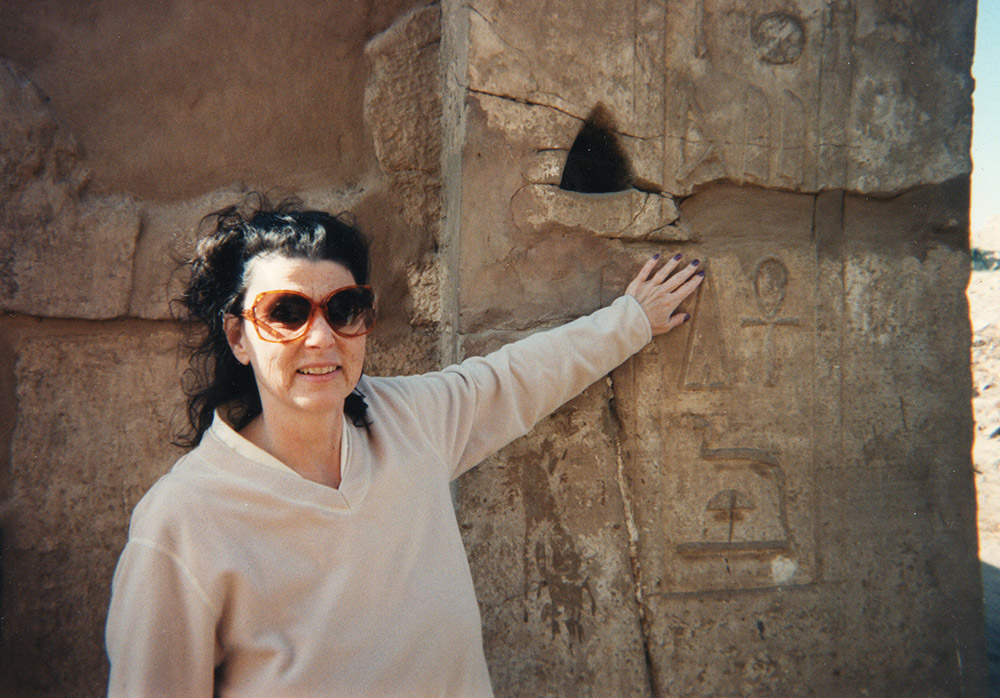
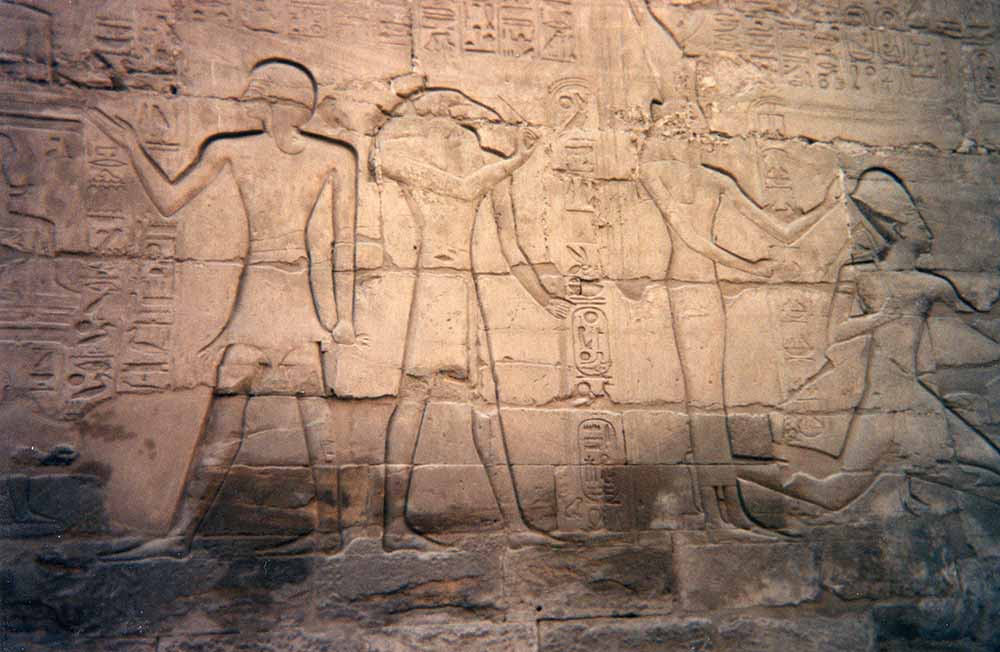
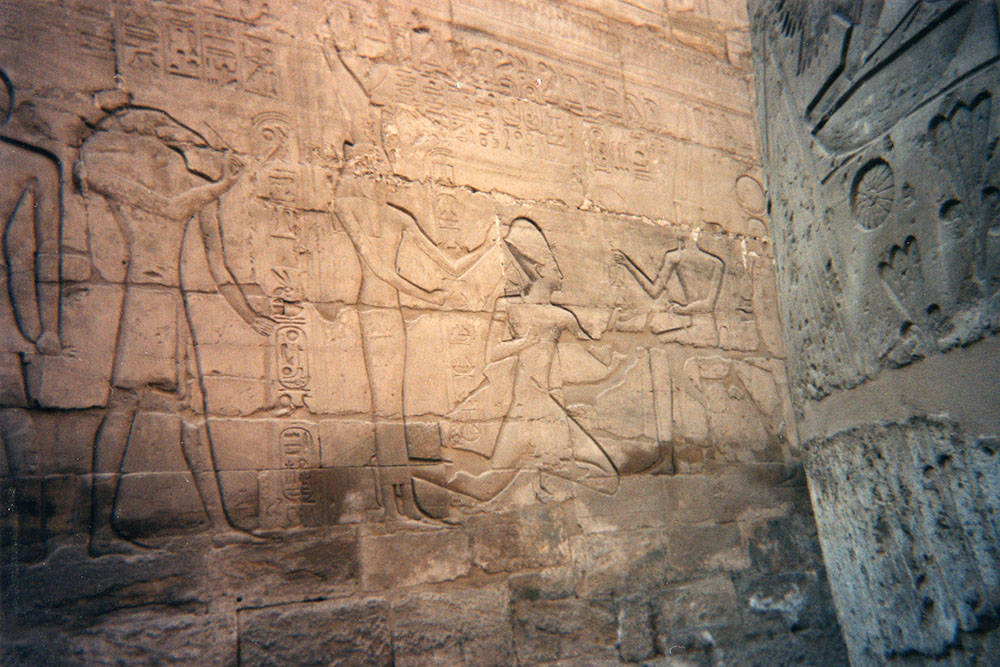
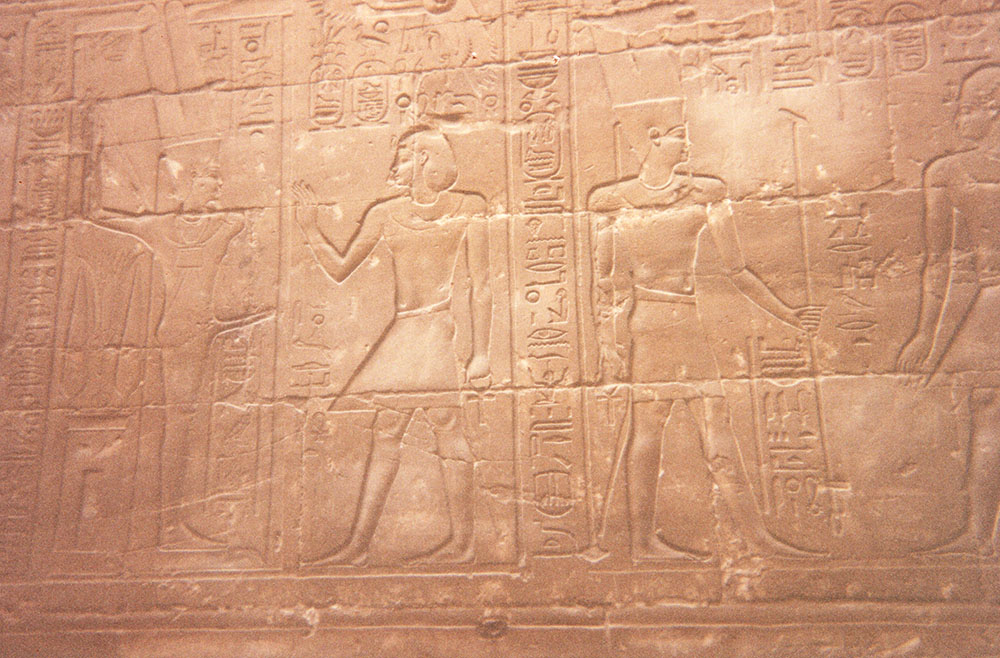
There are many theories covering the main function of the temple and some of the inscriptions, which are unusually immodest, have lead to speculation of fertility rituals. The vast complex was built and enlarged over a thirteen hundred year period. The three main temples of Mut, Monthu and Amun are enclosed by enormous brick walls. The Open Air Museum is located to the north of the first courtyard, across from the Sacred Lake.
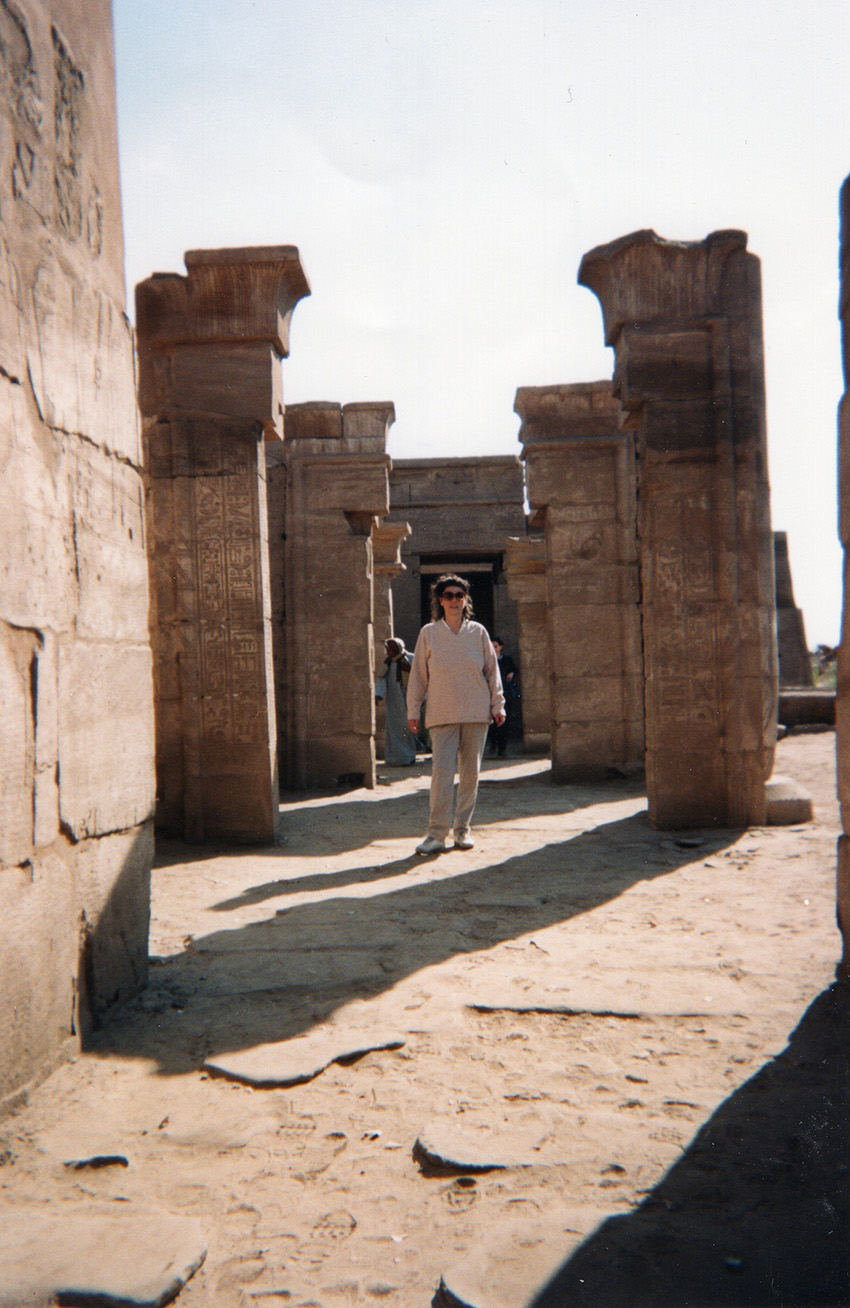

The Great Hypostyle Hall is located within the Karnak temple complex, in the Precinct of Amon-Re. It is one of the most visited monuments of Ancient Egypt. The structure was built around the 19th Egyptian Dynasty (c. 1290-1224 BC). Its design was initially instituted by Hatshepsut, at the North-west chapel to Amun in the upper terrace of Deir el-Bahri. The name refers to hypostyle architectural pattern. The greatest part of the temple is the magnificent Hypostyle Hall consisting of 134 massive columns 23 meters high creating an impression of enormous 'power' and strength. When you enter the area these carved columns are very impressive. Read more

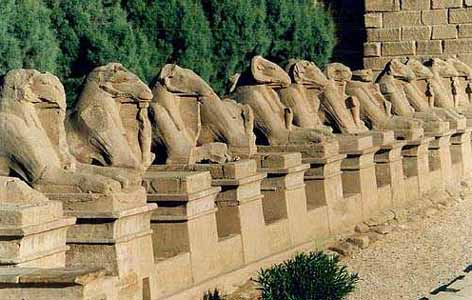
The sphinxes were commissioned by Ramesses II


Ellie standing beside Statue of Pinedjem with his wife depicted as smaller
Pinedjem II was a High Priest of Amun at Thebes in Ancient Egypt from 990 BC to 969 BC and was the de facto ruler of the south of the country. He was married to his sister Isetemkheb D (both children of Menkheperre, the High Priest of Amun at Thebes, by Isetemkheb) and also to his niece Nesikhons, the daughter of his brother Smendes II. He succeeded Smendes II, who had a short rule.



The Temple of Ptah is a shrine located within the large Precinct of Amun-Re at Karnak, in Luxor, Egypt. It lies to the north of the main Amun temple, just within the boundary wall. The building was erected by the Pharaoh Thutmose III on the site of an earlier Middle Kingdom temple. The edifice was later enlarged by the Ptolemaic Kingdom. Read more

About Ptah
To the south of the sanctuary of Ptah is the sanctuary of Sekhmet. The statue of her below, made of black granite, was found in many pieces by Legrain and was pieced back together and re-erected in its original site in the south chapel, just below a small orifice installed in a paving stone of the roof, through which moonlight filters on certain nights directly on the statue's head. The statue is striking for its slender body and narrow thighs that contrast with the massive head that wears a flattened disk with raised uraeus. She holds the wadj scepter with the flowering lotus and the ankh of life in her hands.
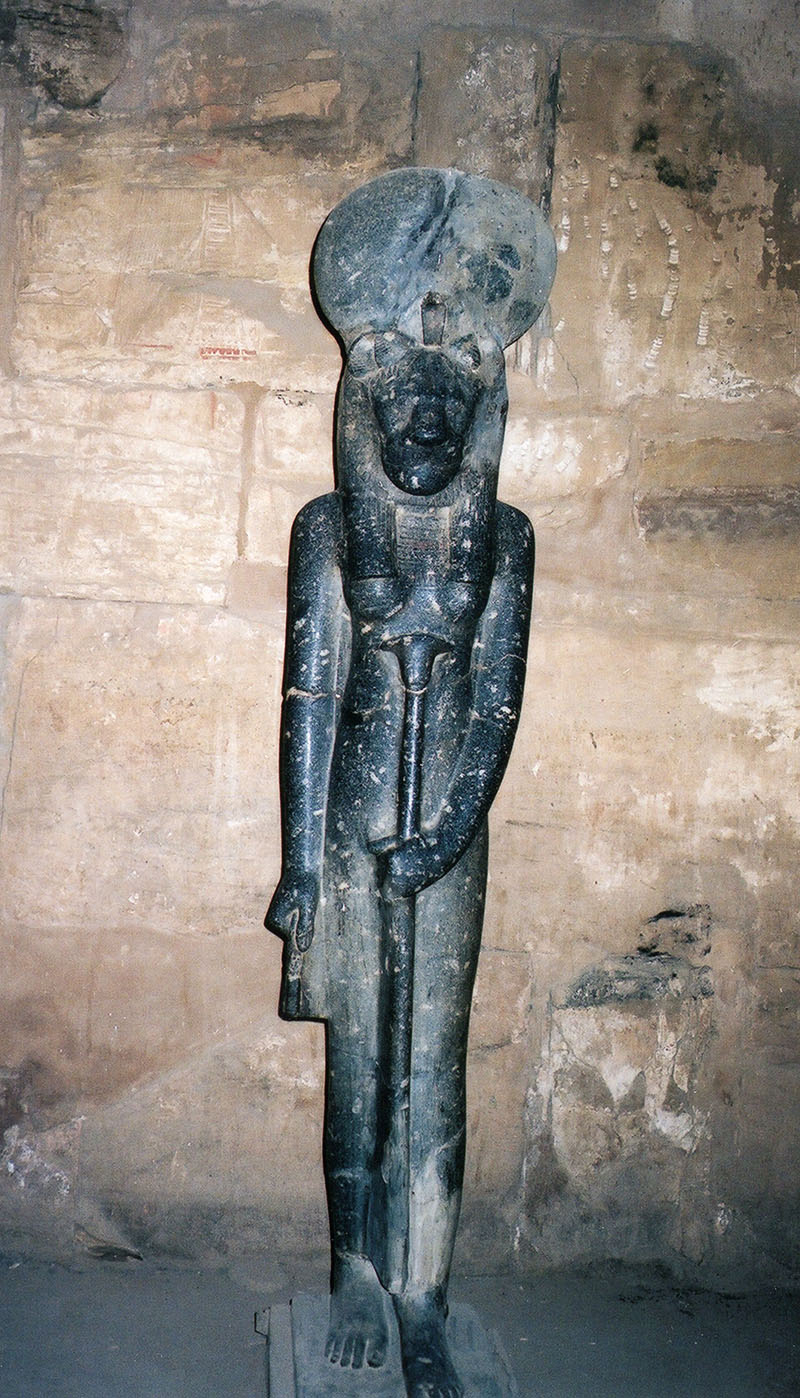
The energies were very powerful for me, the statue feeling like some sort of battery, or generator, of electromagnetic energies. I heard musical notes. My heart chakra opened. I thought Ez and I suddenly felt a strong connection to him. It was time to get some answers ...
I looked at my pocket watch. It was 3:00 PM. I had been awake for almost 20 hours. Irene and Hassan decided to go to Hatshepsut's Temple while Leslie and I would go back to the Hilton Hotel by horse and carriage.
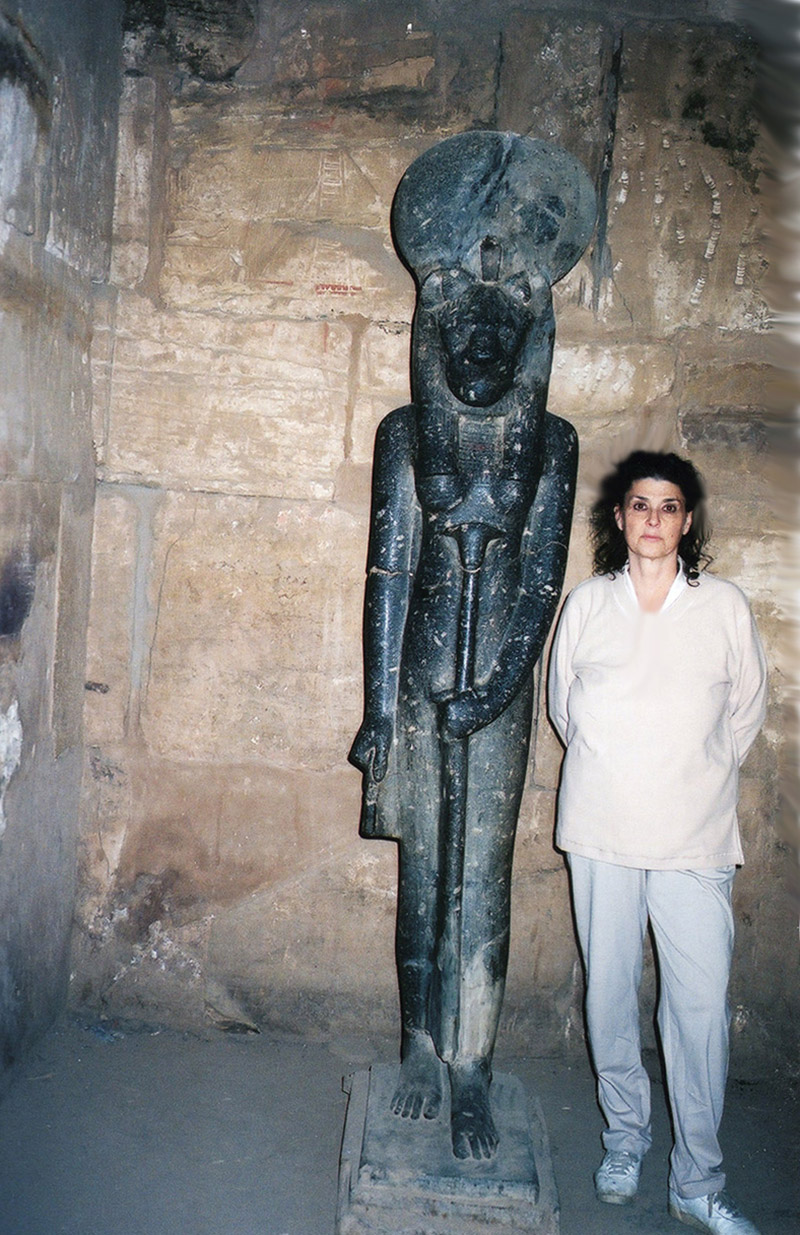
I thought about my blue photos this one reflecting a pharaoh superimposed over my face and a cat to my left
